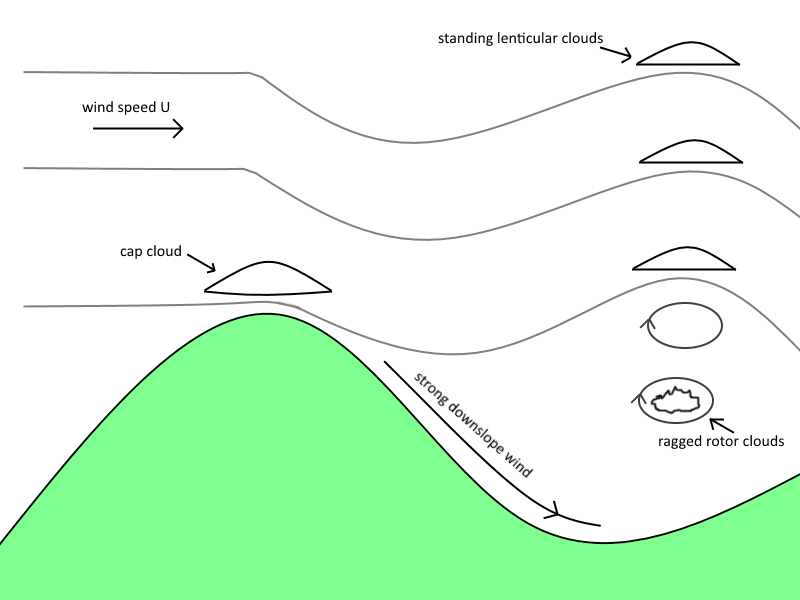Mountain
and Lee Waves
by Hannah Brink -- PHYS 647 Geophysical Fluid
Dynamics
12/03/2017
Consequences: continued
The clouds shown on the previous pages are indicative of the type of weather occurring around the mountain. However, these clouds only appear when there is enough moisture in the air, and other conditions are sufficient for cloud formation. The mountain waves and their effects will still be present, even without the visual aid of clouds.

As a result of propagation of
gravity waves, there is an increase in downslope winds
on the lee side of the large-amplitude mountain. These are
very fast wind speeds that are largely dominated by nonlinear
processes. (H&H 299)
Further, due to the propagation of mountain waves, the wind
speed around the mountain can increase. The higher the
amplitude of the mountain, the more powerful the effect on the
wind speed.
Turbulence will be present as a result of mountain waves, and
this turbulence appears about 5000ft from the tropopause.
(Viera, 2005) However, this turbulence does not require the
presence of clouds. This produced clear-air turbulence,
which is present with large-amplitude mountains. That
turbulence, along with the high wind speeds present, is a
massive risk that pilots must be aware of during flights.
It's possible with a high enough gravity wave amplitude for the gravity wave to overturn on itself due to the crest or trough overtaking the rest of the wave, and 'break' analogous to that of an ocean wave. This is known as gravity wave breaking, and is an advective instability. These only happen when high enough energy is present for overturning. From the breaking of the gravity wave, energy will propagate up into the atmosphere. The energy and momentum added to the upper atmosphere from the lower atmosphere can then influence climate.
Navigation
- Title
- Definitions
- Math Intro
- Linear Wave Theory
- Nonlinear Terms
- List of Consequences
- Clouds - 1
- Clouds - 2
- Consequences - detailed
- Citations